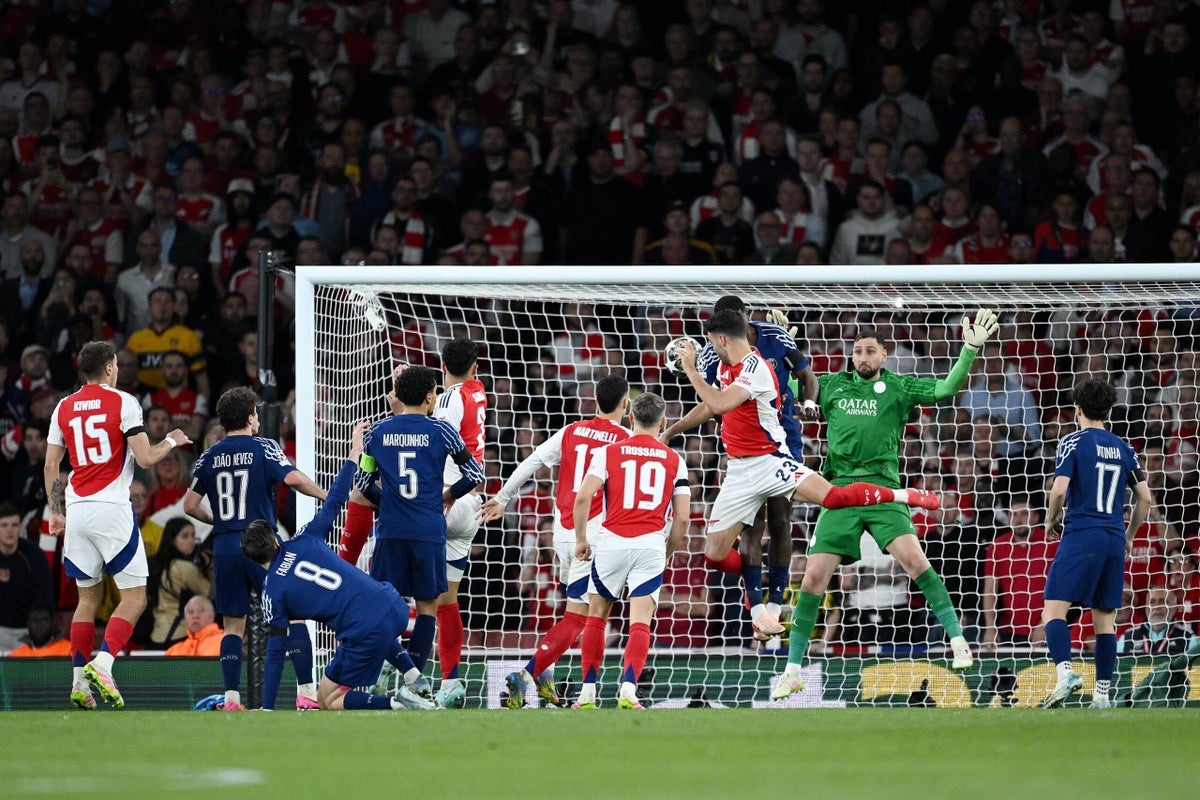Arsenal's Offside Free-Kick: A Tactical Analysis of its Effectiveness and Future Use
Arsenal's audacious offside free-kick goal against Brentford, orchestrated by Mikel Arteta, has ignited a fervent debate within the footballing world. Was it a stroke of genius, a lucky fluke, or a tactic with genuine long-term potential? This article delves into a tactical analysis of this controversial yet effective set-piece, examining its effectiveness and exploring its potential future use.
The Play Itself: A Breakdown
The goal, scored by Leandro Trossard, saw Arsenal deliberately position several players in an offside position before the free-kick was taken. This cleverly manipulated the Brentford defensive wall, creating space for a precise pass to Trossard, who was, crucially, onside.
Here's a step-by-step breakdown:
- The Deception: Arsenal's positioning created a visually confusing scenario for the Brentford wall and goalkeeper. The offside players acted as decoys, drawing attention away from Trossard's run.
- The Precision: The execution was flawless. The pass from the free-kick taker was perfectly weighted and placed to avoid interception, finding Trossard in a pocket of space.
- The Finish: Trossard's composure in converting the chance highlighted the effectiveness of the entire strategy.
Effectiveness and Tactical Implications:
The effectiveness of this tactic hinges on several factors:
- Surprise Element: Its novelty creates a significant element of surprise, catching the opposition off guard. Teams are less likely to anticipate such a maneuver.
- Player Skill: The tactic requires exceptional technical skill from both the free-kick taker and the receiving player. Accurate passing and precise movement are vital.
- Opponent's Reaction: The success rate is heavily dependent on the opponent's reaction. A well-drilled and perceptive defence could potentially anticipate and counteract the strategy.
Future Use and Potential Countermeasures:
While the tactic proved remarkably successful against Brentford, its widespread adoption is unlikely. The high level of skill and the potential for failure mean it's unlikely to become a regular feature in match play. However, it could be used selectively, as a surprise weapon, in specific situations.
For opposing teams, identifying and countering this tactic involves:
- Defensive Awareness: Training players to be aware of potential offside traps during set-pieces.
- Disciplined Wall Positioning: Ensuring the wall maintains a consistent and compact formation.
- Goalkeeper Communication: Clear communication between the goalkeeper and defenders regarding potential movement.
Conclusion: A Tactical Novelty or a Future Trend?
While Arsenal's offside free-kick goal against Brentford was a stunning moment of tactical innovation, it remains to be seen whether it will become a more commonly used strategy. Its effectiveness hinges on a confluence of factors – surprise, skill, and the opponent's defensive reaction. It serves as a fascinating example of tactical ingenuity within the game, demonstrating the ever-evolving nature of football strategy and offering a glimpse into the possibilities of creative set-piece play. The future will tell whether this audacious move becomes a staple in the Arsenal playbook or remains a unique tactical footnote. However, its impact on the game and the subsequent conversations surrounding its legality and effectiveness are undeniable.
Keywords: Arsenal, offside, free-kick, tactical analysis, Brentford, Arteta, Trossard, football strategy, set-piece, football tactics, Premier League, football analysis.

